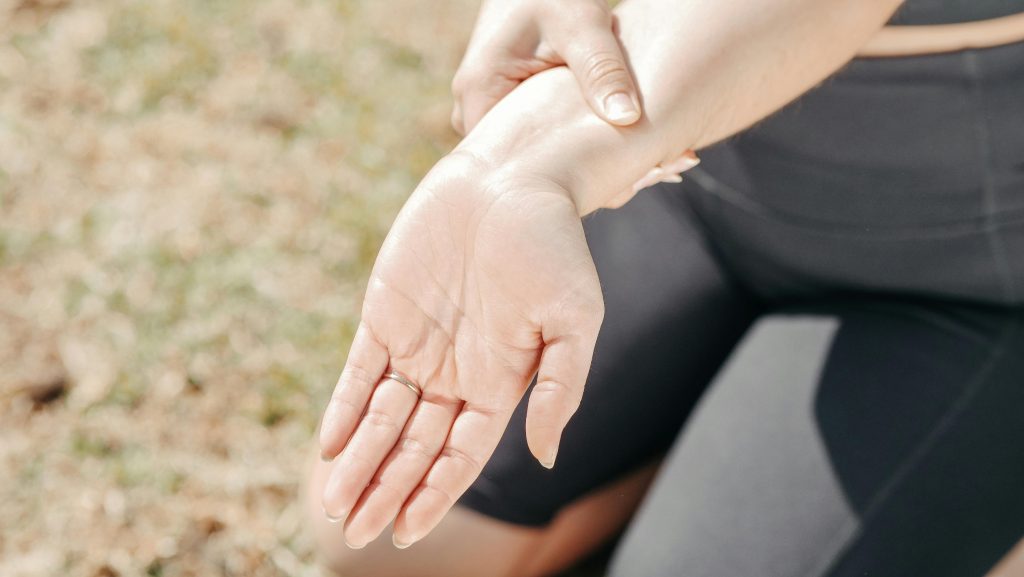How to Stretch Safely After an Injury
Introduction
Recovering from an injury often brings a mix of relief and frustration: relief that you’re on the mend, frustration at limited mobility and discomfort. Stretching is a cornerstone of rehabilitation, helping restore flexibility, improve circulation, and reduce stiffness. However, doing too much too soon—or using improper technique—can exacerbate the injury or create new problems. In this comprehensive guide, we’ll explore how to stretch safely and effectively post-injury: from understanding your unique limitations and warming up properly to choosing the right types of stretches, monitoring pain signals, and progressing gradually. Whether you’ve strained a muscle, sprained an ankle, or undergone surgery, these evidence-based strategies will support your path to full and sustainable recovery.

Understanding Your Injury and Consulting Professionals
Know Your Diagnosis
Before beginning any stretching routine, clarify the nature and severity of your injury. Common categories include:
- Acute strains and sprains: Overstretching or tearing muscle fibers or ligaments.
- Tendinopathies: Inflammation or degeneration of tendons (e.g., Achilles tendinitis).
- Post-surgical limitations: Scar tissue formation, joint stiffness after procedures.
- Chronic conditions: Arthritis, low back pain, or repetitive-use injuries like tennis elbow.
Seek Expert Guidance
- Physical therapist evaluation: A licensed therapist will assess your range of motion, muscle imbalances, and pain triggers to prescribe individualized stretches.
- Medical clearance: For serious injuries or post-surgical cases, get written approval from your physician outlining any restrictions or recommended timelines.
- Red-flag recognition: Learn signs that warrant pausing—sharp pain, swelling, numbness, or joint instability—and consult your provider if they arise.
The Principles of Safe Post-Injury Stretching
1. Warm Up Thoroughly
Stretching cold, injured tissues increases the risk of further tears. Begin with:
- Low-impact cardio: 5–10 minutes of walking, stationary cycling, or water walking to raise tissue temperature and blood flow.
- Dynamic movements: Gentle limb swings, ankle circles, or arm rotations—within pain-free ranges—to lubricate joints.
2. Respect Pain Signals
- Discomfort vs. Sharp Pain: Mild stretching discomfort is acceptable; sharp, shooting pain is a warning to stop immediately.
- Pain scale monitoring: Aim to stay below a 3–4 out of 10 on the pain scale. If you exceed that, ease off or modify the stretch.

3. Prioritize Quality Over Quantity
- Slow and controlled: Hold each stretch for 15–30 seconds, moving in and out of the range gently.
- Focus on form: Maintain proper alignment (neutral spine, relaxed shoulders) to avoid compensatory strain.
4. Progress Gradually
- Micro-increments: Increase stretch intensity or duration by no more than 10% per week.
- Frequency: Start with once daily, then progress to 2–3 times per day as tolerated.
5. Incorporate Both Static and Dynamic Techniques
- Static stretches: Held positions that gently lengthen tissues—ideal for post-session cool-down.
- Dynamic stretches: Movement-based stretches performed slowly to improve functional mobility—best used after warm-up.
Specific Stretching Strategies by Injury Type
A. Lower Back Strain
Key muscles: Hamstrings, hip flexors, lumbar paraspinals.
- Knee-to-Chest Stretch:
- Lie on your back with knees bent.
- Gently pull one knee toward your chest until mild stretch in lower back.
- Hold 20–30 seconds, switch sides.
- Pelvic Tilts:
- Lie supine, knees bent.
- Tilt pelvis to flatten lower back against floor, hold 5 seconds.
- Repeat 10–15 reps.
- Hamstring Foam-Release (Dynamic):
- Use foam roller under hamstring, roll slowly to find tight spots.
- Pause and breathe for 20 seconds, then continue rolling.
B. Shoulder Impingement or Rotator-Cuff Issues
Key muscles: Posterior capsule, pec minor, infraspinatus.
- Pendulum Swings:
- Lean forward, non-injured arm supported on chair.
- Let injured arm hang and swing gently in circles (small→large).
- Cross-Body Stretch:
- Bring injured arm across chest, support elbow with opposite hand.
- Feel stretch in back of shoulder; hold 15–20 seconds.
- Active Arm Raises (Pain-Free Range):
- Slowly lift arm in front to shoulder height, lower back.
- 10–15 controlled reps.
C. Ankle Sprain
Key muscles: Calves, peroneals, Achilles tendon.
- Seated Towel Stretch:
- Loop towel around ball of foot, pull toes toward shin.
- Hold 20–30 seconds; avoid bouncing.
- Alphabet Tracing (Dynamic):
- Seated, extend injured leg; trace alphabet in air with big toe.
- Encourages multi-plane mobility.
- Gastrocnemius Stretch:
- Stand facing wall, injured foot back, heel down.
- Lean forward until mild calf stretch; hold 20 seconds.
Incorporating Proprioceptive and Neuromuscular Control
Balance and Stability Drills
Improving proprioception reduces re-injury risk:
- Single-leg stands: Hold onto support initially, progress to eyes closed.
- Wobble board exercises: Gentle rocking to engage stabilizing muscles.
PNF (Proprioceptive Neuromuscular Facilitation) Techniques
- Contract–Relax: Contract injured muscle against resistance 5 seconds, then relax and stretch further.
- Hold–Relax with Agonist Contraction: After contraction-relax, actively contract the opposite muscle to enhance stretch.
Note: PNF should be performed under guidance, as intensity can be high.
Integrating Stretching Into Your Rehabilitation Routine
- Pre-Activity Routine:
- Dynamic stretches and foam-release before exercise or daily tasks.
- Post-Activity Cool-Down:
- Static stretches targeting injured area to promote flexibility and recovery.
- Separate Therapy Sessions:
- Dedicated rehab time (10–15 minutes, 2–3× daily) focused on injury-specific stretches and motor-control exercises.
- Combine with Strength Training:
- Balance flexibility with targeted strengthening to stabilize joints and support proper movement patterns.
When to Pause or Seek Further Help
- Increased pain or swelling: More than mild post-stretch soreness suggests overstretching.
- Persistent limited range after 4–6 weeks: Indicates need for re-evaluation by a therapist.
- New onset of numbness or tingling: Possible nerve involvement—seek medical assessment.

Conclusion
Stretching after an injury is a balancing act: you need enough tension to promote tissue remodeling and flexibility, yet enough caution to avoid setback. By consulting professionals, warming up thoroughly, respecting pain signals, progressing gradually, and combining static, dynamic, and proprioceptive techniques, you’ll rebuild safe, functional range of motion. Tailor your approach to your specific injury, monitor your body’s responses, and integrate strengthening alongside stretching to ensure a durable recovery. With patience and consistency, you’ll regain mobility and return stronger than before.

Leave a Reply